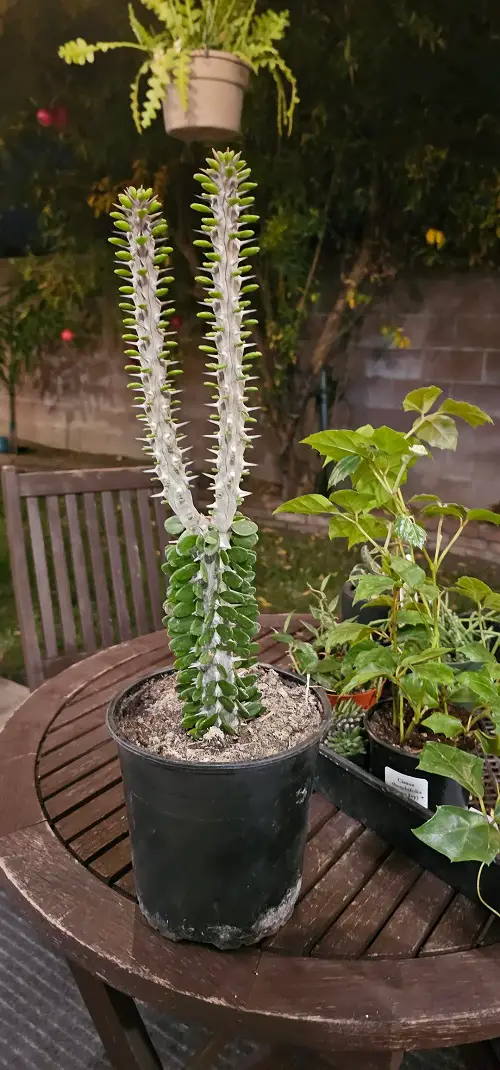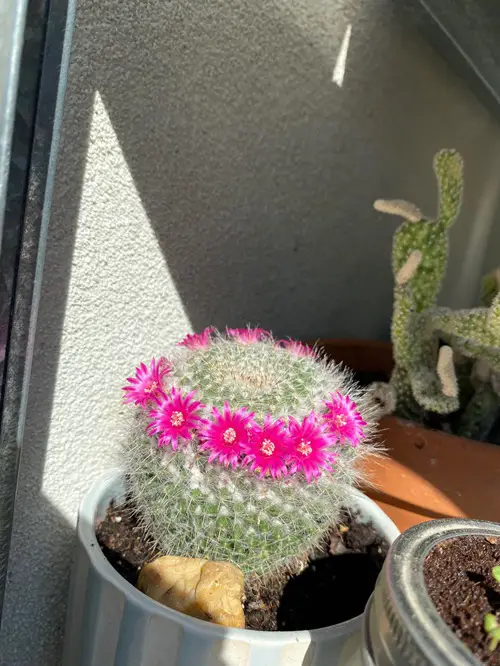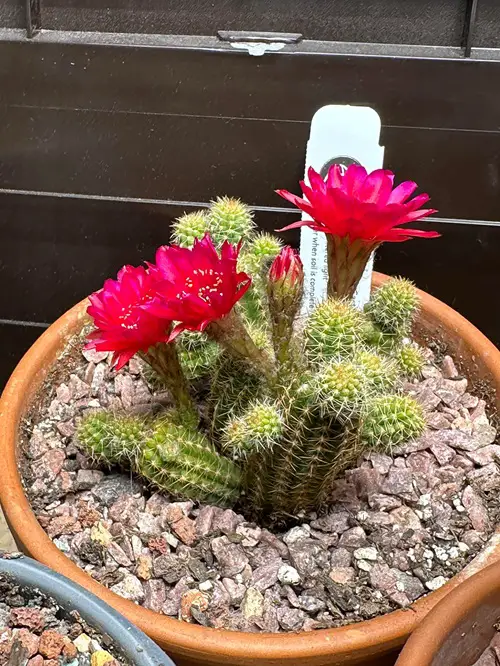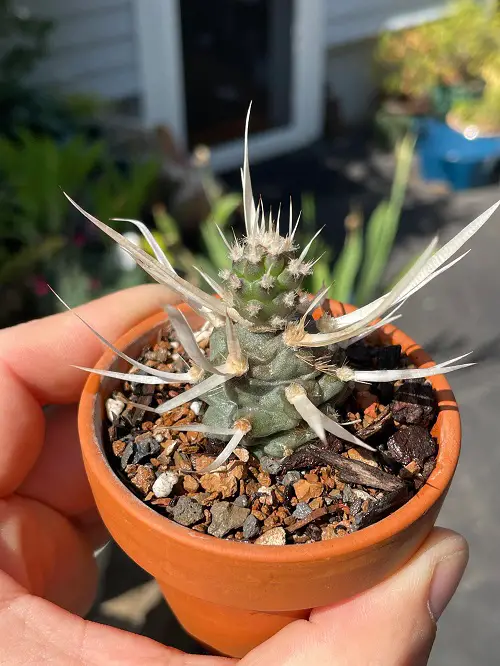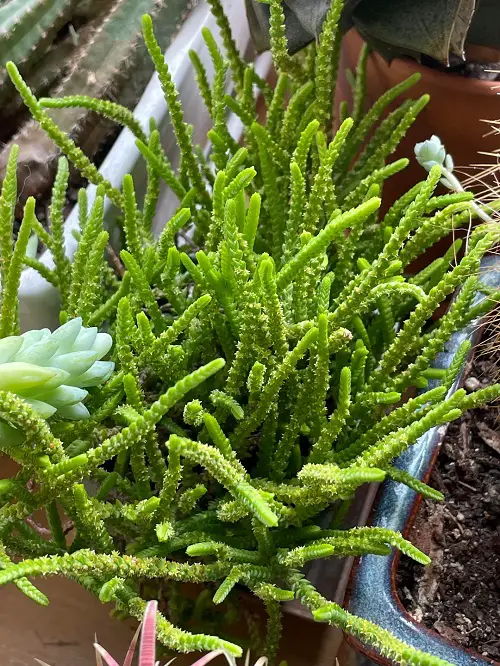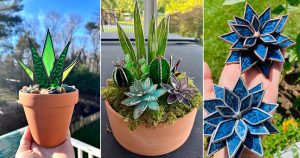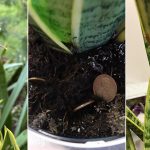The vast variety of plants available to us showcases many unique features, but have you ever seen succulents with thorn buds? Read on!
You’ve likely seen different kinds of cacti blooming. While they’re beautiful, did you know that some succulents also have both thorns and buds? Let’s explore these unique creations of nature!
Succulents with Thorn Buds
1. Crown of Thorns
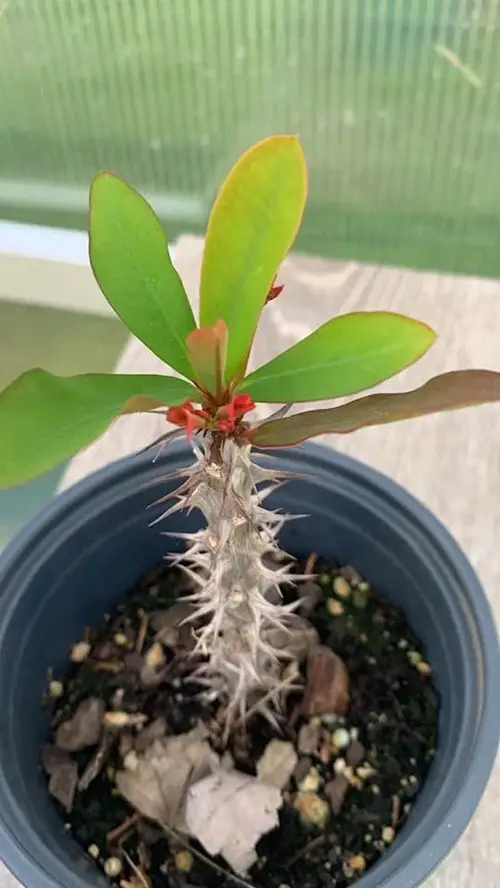
Botanical Name: Euphorbia milii
Coming from a genus of smooth, spiny shrubs, this cactus-like succulent is incredibly tough. It withstands harsh conditions and doesn’t need cold or darkness to start budding and flowering.
The flowers of the Euphorbia grow in clusters and are usually red and yellow but hybrid cultivars may also produce them in cream, yellow, and white. And this plant can bloom nearly all year round when given enough sunlight.
Fact: The plant’s name comes from the belief that the plant’s stems formed the crown of thorns worn by Jesus Christ.
2. Madagascar Ocotillo
Botanical Name: Alluaudia procera
This tall succulent from Madagascar is all about height and can reach over 15 meters in the wild, with cylindrical stems covered in spines and lined with small, oval leaves around 2-3 cm long that grow in pairs along the stem. Buds develop along its length and open into cream-colored flowers.
The Madagascar Ocotillo’s towering silhouette and spiky stems bring a bit of the exotic desert right to your garden, plus it’s a breeze to care for in hot, arid climates.
3. Old Lady Cactus
Botanical Name: Mammillaria hahniana
This plant is a great example of a succulent with both thorns and buds, which sometimes appear to sprout right from the spines! Native to Mexico, the Old Lady Cactus has short, white spines and funnel-shaped hot pink flowers that bloom for a long time.
The Old Lady Cactus is actually fuzzy! The white spines give it a “halo” look that can give your garden the icing on the cake!
4. Peanut Cactus
Botanical Name: Echinopsis chamaecereus
Identified by its small, white spines, the Peanut cactus can positively surprise you with its gorgeous orange-red flowers, blooming in late spring to early summer. Some hybrids may even produce magenta blooms!
Since it has a trailing growth habit, it will look quite eye-catching in hanging baskets and containers. Plus, Peanut Cactus has a habit of being down to earth so, it is perfect for rock gardens. It can even tolerate a little light frost, which is why it is resilient and a great option for an outdoor look.
5. Barrel Cactus
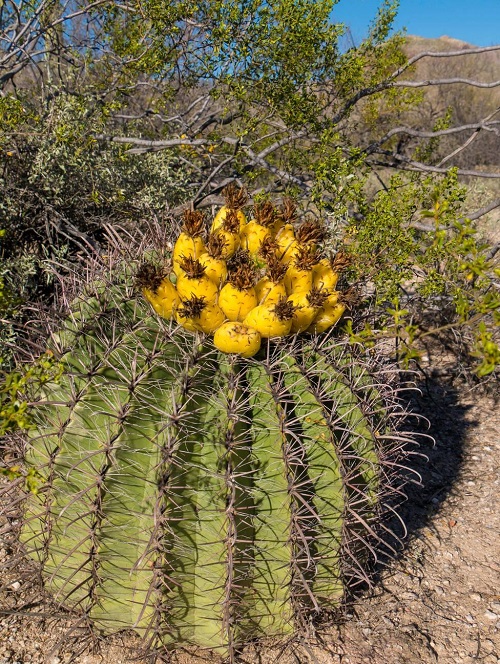
Botanical Name: Ferocactus spp.
Named for its barrel-like shape, the scientific name comes from the Latin word meaning ‘fierce.’ This cactus has prominent, sharp, and stiff spines, with flowers blooming in a ring at the top of the “barrel” in yellow or orangish-red. Unlike other cacti, the Barrel Cactus doesn’t have tubular flowers.
The Barrel Cactus has a survival trick up its sleeve—it can store large amounts of water! In the wild, it’s known as the “Compass Cactus” because it tends to lean southward to avoid the harshest sunlight, helping travelers navigate.
6. Prickly Pear Cactus
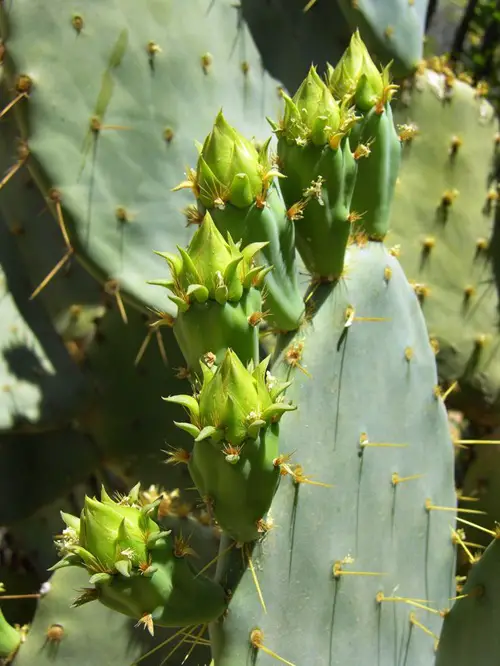
Botanical Name: Opuntia spp.
Growing up to 6 feet tall, the Prickly Pear has two types of spines—broad, sharp spines, and fine, hairy glochids. From mid-May, pointy buds start to form all over, looking like additional thorns until they bloom into bright yellow flowers.
Fact: The Prickly Pear is famous for its edible fruit, often called “tuna.” It’s packed with antioxidants and has a sweet, tangy flavor, so it is a popular treat in various cuisines.
7. Cholla Cactus
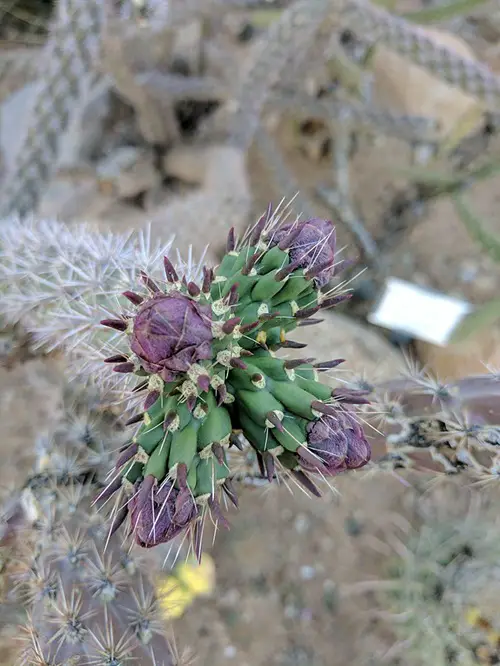
Botanical Name: Cylindropuntia spp.
This iconic desert plant produces edible buds! Of course, there is a proper technique for harvesting and eating them since the whole of their bodies are covered with barbed, detachable spines. These thorns actually give the plant an illusion of being backlit. The flowers of Cholla cacti are generally small, ranging from colors like pink, yellow, orange, and purple.
Did you know? The Cholla Cactus has a fascinating defensive strategy—its spines can attach to anything that brushes by, including animals, to spread seeds far and wide—nature’s clever hitchhiker!
8. Paper Cactus
Botanical Name: Tephrocactus papyracanthus
The Paper Cactus is a one-of-a-kind with spines that only appear sharp. Its spines are actually soft and feel like paper! Unlike typical cactus spines, they’re flexible, allowing you to hold them without any pricks, and kids also love to explore them and no worries as it is safe for them too.
This cactus blooms with rare white or yellow flowers, appearing after a tough season, making its flowers a real treat for anyone lucky enough to see them.
9. Watch Chain Plant
Botanical Name: Crassula muscosa
The Watch Chain Plant is unique because it can be tricky to notice when it blooms! Its flowers are tiny and often hide within the cups of leaves at the branch tips, so they might have bloomed without you even catching it.
Although it doesn’t have true thorns, this plant gets included here because of its thorn-like look—its tightly stacked leaves create a spiky appearance that looks so adorable in itself!
So that’s all about succulents with thorn buds. Which one caught your eye? Let us know in the comments below.

